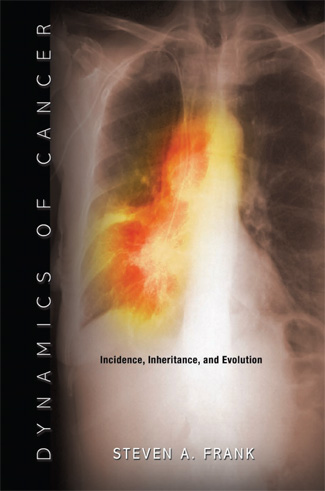
Published by Princeton University Press
400 pages, 111 illustrations
Paper | ISBN13: 978-0-691-13366-9
August, 2007
Overview
Table of contents and introduction
Summary from the back cover
View image of back cover
View a full copy
Download PDF of entire book (3MB)
View full copy of book on NLM (PubMed) Bookshelf
Buy a copy
Buy from Princeton University Press
Buy from Amazon.com
Buy from Barnes and Noble
Open access license
This book is licensed under a Creative Commons Attribution-Noncommercial 2.5 License.
Quotes from reviews (from Amazon.com)
Frank is an evolutionary biologist with a strong mathematics bent. His book grapples with many...issues, offering insights from his mathematical modelling of various steps of tumour progression...One day he may be seen as the pioneer who began the difficult task of building a sturdy foundation for a truly useful mathematical model of cancer development. -- Robert A. Weinberg, Nature
Frank's forte in the book is his search for the simplicity that is often masked by the complexities of cancer. With his mathematical models in hand, he turns to the details of cancer genetics, carcinogens, and aging and provides novel integrative insights...Dynamics of Cancer emphasizes both the multiscale dynamics of the disease and an approach that synthesizes empirical knowledge with parsimonious, mathematical theory. Frank moves the field forward, narrowing the gap between a tragic disease of everyday life and the Darwinian world of the genome. -- David C. Krakauer, Science
It will be highly interesting to a wide readership, including students who would like to learn about this subject, theoretical/mathematical biologists, epidemiologists, and molecular/clinical cancer biologists. Although the volume is based on mathematical theory, the excellent writing style ensures that it can be read both by biologists with no background in mathematics, and by theoreticians who would like to learn more about the dynamics that govern cancer initiation and progression. -- Dominik Wodarz, Quarterly Review of Biology
